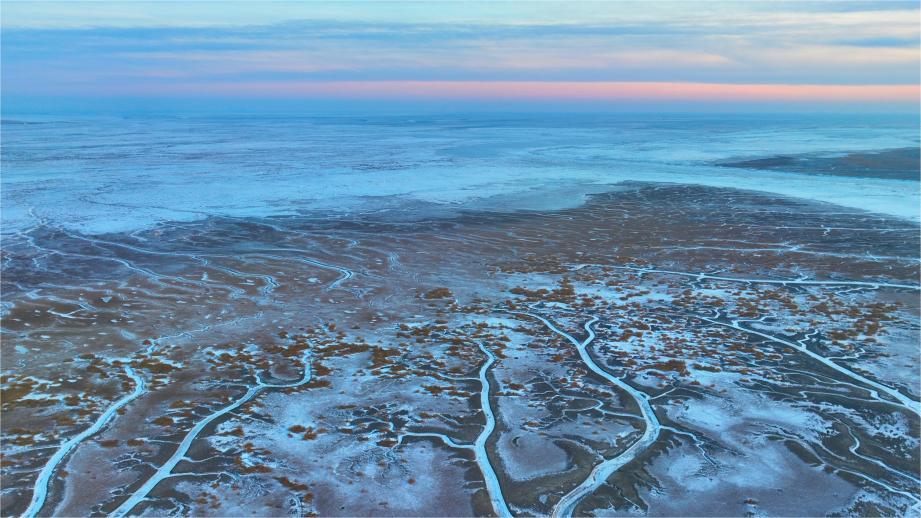Ecological efforts in Sanjiangyuan wetland reap thriving results
XINING, Feb. 2 (Xinhua) -- In the heart of winter, Cering Domzhub still confronts the biting winds every day at the height of around 4,000 meters on the Qinghai-Xizang Plateau, engaging in ecological patrols.
At the Zekog Zechu National Wetland Park in northwest China's Qinghai Province, the 33-year-old wetland ranger Cering Domzhub oversees a bird-watching site, as one of the 22 dedicated conservators in the park collaborating with the government to safeguard the wetland ecology.
The park is home to six species of class-A national protected animals, including black-necked cranes. "Every summer, the wetland in the park transforms into a crucial 'transit point' and 'gas station' for black-necked cranes, filling the grassland with bursts of birdsong and vibrant vitality," Cering Domzhub said.
The park holds a pivotal position in water conservation within the Sanjiangyuan area, playing a crucial role in preserving the pristine alpine wetlands of the Qinghai-Xizang Plateau.
"In recent years, local authorities have applied for a total of 31.7 million yuan (about 4.46 million U.S. dollars) in central financial funds, restoring 5,135 mu (about 342 hectares) of vegetation and upkeeping 43 km of patrol roads in the park," said Ma Ersha, director of the natural resources and forestry grassland bureau of Zekog County.
The Sanjiangyuan area, nestled in the southern part of Qinghai Province in northwest China, holds the origins of three mighty rivers -- the Yangtze, Yellow, and Lancang.
Over the years, the province diligently safeguarded the wetlands of Sanjiangyuan. The growing robust ecological health of the wetlands has evolved into a shared foundation for the well-being of all its inhabitants.
Ma Jianhai, director of the wetland management department of Qinghai provincial forestry and grassland bureau, said that in 2023, the bureau secured 72.47 million yuan that was invested into diverse wetland protection projects, including the execution of 19 wetland protection and restoration initiatives.
"This concerted effort has paved ways for a comprehensive wetland protection system in Qinghai, with national parks as the primary focus and various wetland parks serving as supplementary components," Ma said.
Qinghai Lake, China's largest inland saltwater lake, has also undergone significant positive transformations thanks to comprehensive protection measures.
With an expansive water area now reaching nearly 4,547 square km and a water level of approximately 3,197 meters, coupled with 60 percent of comprehensive vegetation coverage, the lake has become an attractive habitat hosting 288 species of birds and accommodating 606,000 resident waterbirds.
According to Du Pinggui, director of the provincial forestry and grassland bureau, the plateau's distinctive "grass - river - lake - fish - bird" symbiotic ecological chain is approaching a balanced state.
"We will persist in enhancing the diversity, stability, and sustainability of the wetland ecosystem in Qinghai, fostering the modernization of harmonious coexistence between man and nature," Du said.
Photos
Related Stories
- China to ramp up wetland protection, restoration
- Winter scenery of Xixi Wetland in Hangzhou, E China
- White swans seen at Pinglu Yellow River Wetland in N China
- Study reveals marsh wetlands' response to climate change in Qinghai-Tibetan Plateau
- Black-faced spoonbills seen at wetland park in S China's Hainan
Copyright © 2024 People's Daily Online. All Rights Reserved.









